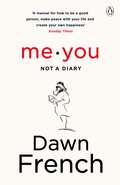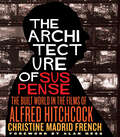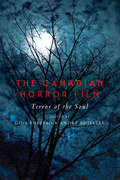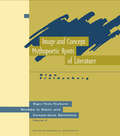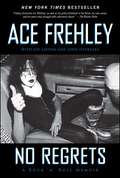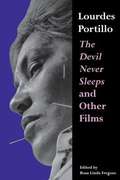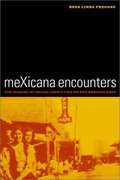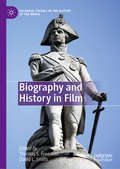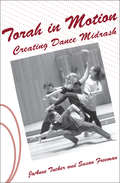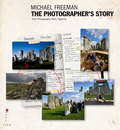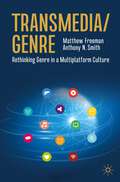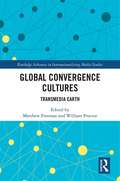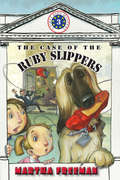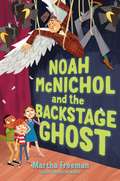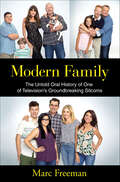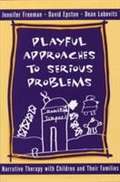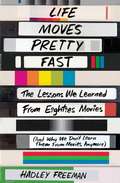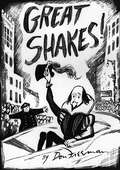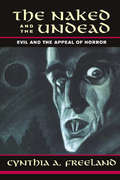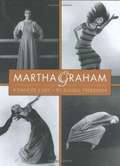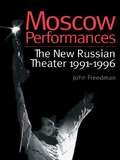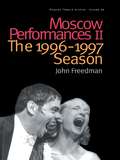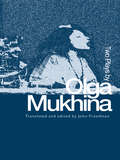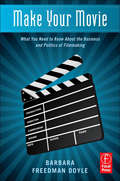- Table View
- List View
Me. You. Not a Diary: The No.1 Sunday Times Bestseller
by Dawn French'A mellow, gentle read with a lot of words of wisdom' IndependentMe You is a pocket diary without the diary part. Or the pocket. Me You: Not A Diary is everything you loved about the original but without the calendar pages. To keep a working diary alongside Dawn, we recommend the hardback edition of Me You: A Diary.Me You is a place for me and you to reflect on the patterns and changes of the year. It's full of my thoughts about the seasons, the months and what matters. It's your guide to reflecting on the year you've just had - or the one still to come.Dive in, the paper's lovely . . ._______'A witty outlook on life. This will have you laughing about your year' Prima'It's beautiful, like Dawn, and stuffed full of goodies' Jo Brand
The Architecture of Suspense: The Built World in the Films of Alfred Hitchcock (Midcentury)
by Christine Madrid FrenchThe inimitable, haunting films of Alfred Hitchcock took place in settings, both exterior and interior, that deeply impacted our experiences of his most unforgettable works. From the enclosed spaces of Rope and Rear Window to the wide-open expanses of North by Northwest, the physical worlds inhabited by desperate characters are a crucial element in our perception of the Hitchcockian universe. As Christine Madrid French reveals in this original and indispensable book, Hitchcock’s relation to the built world was informed by an intense engagement with location and architectural form—in an era marked by modernism’s advance—fueled by some of the most creative midcentury designers in film.Hitchcock saw elements of the built world not just as scenic devices but as interactive areas to frame narrative exchanges. In his films, building forms also serve a sentient purpose—to capture and convey feelings, sensations, and moments that generate an emotive response from the viewer. Visualizing the contemporary built landscape allowed the director to illuminate Americans’ everyday experiences as well as their own uncertain relationship with their environment and with each other.French shares several untold stories, such as the real-life suicide outside the Hotel Empire in Vertigo (which foreshadowed uncannily that film’s tragic finale), and takes us to the actual buildings that served as the inspiration for Psycho’s infamous Bates Motel. Her analysis of North by Northwest uncovers the Frank Lloyd Wright underpinnings for Robert Boyle’s design of the modernist house from the film’s celebrated Mount Rushmore sequence and ingeniously establishes the Vandamm House as the prototype of the cinematic trope of the villain’s lair. She also shows how the widespread unemployment of the 1930s resulted in a surge of gifted architects transplanting their careers into the film industry. These practitioners created sets that drew from contemporary design schools of thought and referenced real structures, both modern and historic. The Architecture of Suspense is the first book to document how these great architectural minds found expression in Hitchcock’s films and how the director used their talents and his own unique vision to create an enduring and evocative cinematic world.Publication of this volume was assisted by a grant from Furthermore: a program of the J. M. Kaplan Fund
The Canadian Horror Film
by Gina Freitag André LoiselleFrom the cheaply made "tax-shelter" films of the 1970s to the latest wave of contemporary "eco-horror," Canadian horror cinema has rarely received much critical attention. Gina Freitag and André Loiselle rectify that situation in The Canadian Horror Film with a series of thought-provoking reflections on Canada's "terror of the soul," a wasteland of docile damnation and prosaic pestilence where savage beasts and mad scientists rub elbows with pasty suburbanites, grumpy seamen, and baby-faced porn stars.Featuring chapters on Pontypool, Ginger Snaps, 1970s slasher films, Quebec horror, and the work of David Cronenberg, among many others, The Canadian Horror Film unearths the terrors hidden in the recesses of the Canadian psyche. It examines the highlights of more than a century of Canadian horror filmmaking and includes an extensive filmography to guide both scholars and enthusiasts alike through this treacherous terrain.
Image and Concept: Mythopoetic Roots of Literature
by Olga FreidenbergFirst published in 1997. Routledge is an imprint of Taylor & Francis, an informa company.
No Regrets: A Rock 'n' Roll Memoir
by Ace Frehley Joe Layden John OstroskyTHE MUSIC, THE MAKEUP, THE MADNESS, AND MORE. . . . In December of 1972, a pair of musicians placed an advertisement in the Village Voice: “GUITARIST WANTED WITH FLASH AND ABILITY.” Ace Frehley figured he had both, so he answered the ad. The rest is rock ’n’ roll history.He was just a boy from the Bronx with stars in his eyes. But when he picked up his guitar and painted stars on his face, Ace Frehley transformed into “The Spaceman”—and helped turn KISS into one of the top-selling bands in the world. Now, for the first time, the beloved rock icon reveals his side of the story with no-holds-barred honesty . . . and no regrets.For KISS fans, Ace offers a rare behind-the-makeup look at the band’s legendary origins, including the lightning-bolt logo he designed and the outfits his mother sewed. He talks about the unspoken division within the band—he and Peter Criss versus Paul Stanley and Gene Simmons—because the other two didn’t “party every day.” Ace also reveals the inside story behind his turbulent breakup with KISS, their triumphant reunion a decade later, and his smash solo career. Along the way, he shares wild stories about dancing at Studio 54 with “The Bionic Woman,” working as a roadie for Jimi Hendrix, and bar-flying all night with John Belushi. In the end, he comes to terms with his highly publicized descent into alcohol, drugs, and self-destruction—ultimately managing to conquer his demons and come out on top. This is Ace Frehley.No makeup.No apologies.No regrets.
Lourdes Portillo: The Devil Never Sleeps and Other Films
by Rosa Linda FregosoFilmmaker Lourdes Portillo sees her mission as "channeling the hopes and dreams of a people." Clearly, political commitment has inspired her choice of subjects. With themes ranging from state repression to AIDS, Portillo's films include: Después del Terremoto, the Oscar-nominated Las Madres: The Mothers of the Plaza de Mayo, La Ofrenda: The Days of the Dead, The Devil Never Sleeps, and Corpus: A Home Movie for Selena.<P><P>The first study of Portillo and her films, this collection is collaborative and multifaceted in approach, emphasizing aspects of authorial creativity, audience reception, and production processes typically hidden from view. Rosa Linda Fregoso, the volume editor, has organized the book into three parts: interviews (by Fregoso and Kathleen Newman and B. Ruby Rich); critical perspectives (essays by Fregoso, Yvonne Yarbro-Bejarano, Sylvie Thouard, Norma Iglesias, and Barbara McBane); and production materials (screenplays, script notes, storyboards, etc.).
Mexicana Encounters: The Making of Social Identities on the Borderlands
by Rosa Linda FregosoMexicana Encounters charts the dynamic and contradictory representation of Mexicanas and Chicanas in culture. Fregoso's self-reflexive approach to cultural politics embraces the movement for social justice and offers new insights into the ways that racial and gender differences are inscribed in cultural practices.
Biography and History in Film (Palgrave Studies in the History of the Media)
by Thomas S. Freeman David L. SmithThe essays in this volume seek to analyze biographical films as representations of historical individuals and the times in which they lived. To do this, contributors examine the context in which certain biographical films were made, including the state of knowledge about their subjects at that moment, and what these films reveal about the values and purposes of those who created them. This is an original approach to biographical (as opposed to historical) films and one that has so far played little part in the growing literature on historical films. The films discussed here date from the 1920s to the 2010s, and deal with males and females in periods ranging from the Middle Ages to the end of the twentieth century. In the process, the book discusses how biographical films reflect changing attitudes towards issues such as race, gender and sexuality, and examines the influence of these films on popular perceptions of the past. The introduction analyses the nature of biographical films as a genre: it compares and contrasts the nature of biography on film with written biographies, and considers their relationship with the discipline of history. As the first collection of essays on this popular but understudied genre, this book will be of interest to historians as well as those in film and cultural studies.
Torah in Motion: Creating Dance Midrash
by Susan Freeman JoAnne TuckerExplore new ways of prayer and storytelling through Torah in Motion. JoAnne Tucker and Susan Freeman, both experienced in dance and Judaic studies, tell the famous stories of the Torah through modern dance. In this book, they explain how they use dance to interpret Torah and creative ideas to consider when doing so. Dance Midrash offers a new and contemporary form of prayer and expression, uniting both young and old in dance and story.
The Photographer's Story: The Art Of Visual Narrative
by Michael FreemanThis title shows how classic photo stories are shot and edited, giving aspiring photojournalists and hobbyists alike a wealth of ideas to unlock the potential of their most powerful storytelling tool - their camera.
Transmedia/Genre: Rethinking Genre in a Multiplatform Culture
by Matthew Freeman Anthony N. SmithThis book brings genre back to the forefront of the current transmedia trend. Genres are perhaps the most innately transmedial of media constructs, formed as they are from all kinds of industrial, technological and discursive phenomena. Yet, few have considered how genre works in a multiplatform context. This book does precisely that, making a uniquely transmedial contribution to the study of genre in the age of media convergence. The book interrogates how industrial, technological and participatory transformations of digital platforms and emerging technologies reshape workings of genre. The authors consider franchises such as Star Wars, streaming platforms such as Netflix, catch-up services such as ITV Hub, creative technologies such as virtual reality, and beyond. In setting the stage for the revival of genre theory in contemporary transmedia scholarship, this book pushes forward understandings of multiplatform media and the emerging form and function of genre across contemporary culture.
Global Convergence Cultures: Transmedia Earth (Routledge Advances in Internationalizing Media Studies)
by Matthew Freeman William ProctorToday’s convergent media industries readily produce stories that span multiple media, telling the tales of superheroes across comics, film and television, inviting audiences to participate in the popular universes across cinema, novels, the Web, and more. This transmedia phenomenon may be a common strategy in Hollywood’s blockbuster fiction factory, tied up with digital marketing and fictional world-building, but transmediality is so much more than global movie franchises. Different cultures around the world are now making new and often far less commercial uses of transmediality, applying this phenomenon to the needs and structures of a nation and re-thinking it in the form of cultural, political and heritage projects. This book offers an exploration of these national and cultural systems of transmediality around the world, showing how national cultures – including politics, people, heritage, traditions, leisure and so on – are informing transmediality in different countries. The book spans four continents and twelve countries, looking across the UK, Spain, Portugal, France, Estonia, USA, Canada, Colombia, Brazil, Japan, India, and Russia.
The Case of the Ruby Slippers (First Kids Mystery #3)
by Martha FreemanAunt Jen, the official White House hostess, is being thrown a surprise party with a Wizard of Oz theme. A dog that looks just like Toto will be there -- and so will the famous ruby slippers that Judy Garland wore in the movie. But when the box arrives from the Smithsonian Museum, the slippers aren't in it! Never fear, First Kids Cammie and Tessa are on the case. White House dog Hooligan finds one slipper, but no one know where or how. A surprising revelation reveals the thief's identity. Filled with humor and White House inside information, this third First Kids Mystery is exciting from start to finish.
Noah McNichol and the Backstage Ghost
by Martha Freeman&“Will make a theater lover of any young reader.&” —Booklist Perfect for fans of The Wednesday Wars, this raucous and delightful middle grade mystery from Edgar Award–nominated author Martha Freeman is filled with backstage fun, relatable family drama, and maybe even a ghost.Break a leg! That&’s what you say to actors when what you mean is Have a good show!. Anything else is bad luck. When Miss Magnus literally breaks her leg, eleven-year-old Noah McNichol and the rest of the Plattsfield Winklebottom Memorial Sixth-Grade Players are left without a director for their production of Hamlet. Coach Fig comes to the rescue—sort of. He&’ll direct, even though he is clearly more interested in whatever is happening on his phone than in directing. He doesn&’t even know upstage from downstage! But then something weird happens: out of nowhere appears a strangely dressed old guy named Mike. He tells Noah he has theater experience, before disappearing—poof. Noah has some investigating to do and some decisions to make. Like, does he care more that their new director might be a ghost or about getting to make his stage debut? And who is Mike and why has he decided to help? As things get weirder and weirder, one thing becomes clear: The show must go on, and Noah will do whatever it takes to make sure that happens.
Modern Family: The Untold Oral History of One of Television's Groundbreaking Sitcoms
by Marc FreemanAn oral history, with the full participation of cast and crew, of one of the most popular sitcoms in television history.Since premiering in 2009, the groundbreaking television sitcom Modern Family has garnered tens of millions of devoted fans, earning 75 Emmy nominations and 22 Emmy Awards, including five in a row for Outstanding Comedy Series (one of only two sitcoms to ever achieve that feat). Professors have written about it. Psychologists have lectured on it. Leading publications, such as The New York Times and Washington Post, have explained their love for it. With funny, heartfelt and relatable stories about family, Modern Family has gained a worldwide following of hundreds of millions of viewers in countries as diverse as England, Israel, The Netherlands, Germany, and South Africa.As much as people love the show, few know the stories behind it. How did a kernel of an idea by Emmy-winning writers Steve Levitan and Chris Lloyd morph into a television juggernaut? Where did they find the cast? How did they come up with story ideas and film favorite episodes? What went on behind the scenes? Up until now, there have been individual stories and interviews about the show, but nothing comprehensive that captures the complete story of the series.Marc Freeman's Modern Family: The Untold Oral History of One of Television's Groundbreaking Sitcoms is the only major book ever written that explores this show as told by those who created it. More than seventy people, including the entire cast, crew, and creators, detail the full history of this iconic sitcom. The cast recalls their memories of the trials and tribulations of casting. They share their impressions from the first table read through the last light turning out. Writers, directors, and performers walk readers through storylines, production and favorite episodes. Guest stars such as Elizabeth Banks, Josh Gad, Adam Devine, Matthew Broderick and Nathan Lane recall their appearances on the show while others recount their experiences working with Kevin Hart, Barbara Streisand, Ed Norton and more. Readers get to go behind the scenes and experience the show like never before, including personal photos. They’ll also discover the never-told fallout and divorce of the two showrunners, making the show two separate series blended into one. Even people unfamiliar with the show will gain deep insight into what it takes to put a series on television.Typically, oral histories come out as retrospectives, based entirely on recall. This one will have the benefit of having the ending occur in real-time. From script development to final season (the 11th season will be the show's last) readers will get a glimpse of the cast’s relationships with each other and the emotions attached to saying goodbye to the best and longest-running workplace many of them expect to ever experience. Much like the series itself, this book shares a story of family, of conflict and collaboration, that went into this timeless, groundbreaking series.
Playful Approaches to Serious Problems: Narrative Therapy with Children and their Families
by Jennifer Freeman David Epston Dean LobovitsThe "grown-up talk" of therapy is likely to turn off children - especially if it focuses on their problematic behavior. The highly effective techniques of narrative therapy include children by respecting their unique language, stories, and views of the world. This book describes a basic theory of collaborative narrative play, as well as verbal and nonverbal techniques that clear the way for stories of hope, possibility, and change. Compelling case examples, drawn from the authors' work, will appeal to parents and educators as well as therapists.
Life Moves Pretty Fast: The Lessons We Learned From Eighties Movies (and Why We Don't Learn Them From Movies Anymore)
by Hadley FreemanFrom Vogue contributor and Guardian columnist Hadley Freeman, a personalized guide to eighties movies that describes why they changed movie-making forever—featuring exclusive interviews with the producers, directors, writers and stars of the best cult classics.For Hadley Freeman, movies of the 1980s have simply got it all. Comedy in Three Men and a Baby, Hannah and Her Sisters, Ghostbusters, and Back to the Future; all a teenager needs to know in Pretty in Pink, Ferris Bueller’s Day Off, Say Anything, The Breakfast Club, and Mystic Pizza; the ultimate in action from Top Gun, Die Hard, Beverly Hills Cop, and Indiana Jones and the Temple of Doom; love and sex in 9 1/2 Weeks, Splash, About Last Night, The Big Chill, and Bull Durham; and family fun in The Little Mermaid, ET, Big, Parenthood, and Lean On Me.In Life Moves Pretty Fast, Hadley puts her obsessive movie geekery to good use, detailing the decade’s key players, genres, and tropes. She looks back on a cinematic world in which bankers are invariably evil, where children are always wiser than adults, where science is embraced with an intense enthusiasm, and the future viewed with giddy excitement. And, she considers how the changes between movies then and movies today say so much about society’s changing expectations of women, young people, and art—and explains why Pretty in Pink should be put on school syllabuses immediately.From how John Hughes discovered Molly Ringwald, to how the friendship between Dan Aykroyd and John Belushi influenced the evolution of comedy, and how Eddie Murphy made America believe that race can be transcended, this is a “highly personal, witty love letter to eighties movies, but also an intellectually vigorous, well-researched take on the changing times of the film industry” (The Guardian).
Great Shakes
by Don FreemanIn simple yet all-telling black-and-white graphics, Freeman unfolds a humorous, lively, deeply human, and yet modern story of William Shakespeare being brought down from Heaven to help Hollywood out of a creative depression. Naturally, in a new environment, "Shakes" cannot produce hit material on call... and so his adventures begin – with humorous and deep consequences, all told without words! Enjoy Don Freeman's humour and his wonderful and sense of life with all of humanity' highs and lows and in-betweens.
The Naked And The Undead
by Cynthia FreelandHorror is often dismissed as mass art or lowbrow entertainment that produces only short-term thrills. Horror films can be bloody, gory, and disturbing, so some people argue that they have bad moral effects, inciting viewers to imitate cinematic violence or desensitizing them to atrocities. In The Naked and the Undead: Evil and the Appeal of Horror, Cynthia A. Freeland seeks to counter both aesthetic disdain and moral condemnation by focusing on a select body of important and revealing films, demonstrating how the genre is capable of deep philosophical reflection about the existence and nature of evil-both human and cosmic. In exploring these films, the author argues against a purely psychoanalytic approach and opts for both feminist and philosophical understandings. She looks at what it is in these movies that serves to elicit specific reactions in viewers and why such responses as fear and disgust are ultimately pleasurable. The author is particularly interested in showing how gender figures into screen presentations of evil.The book is divided into three sections: Mad Scientists and Monstrous Mothers, which looks into the implications of male, rationalistic, scientific technology gone awry; The Vampire's Seduction, which explores the attraction of evil and the human ability (or inability) to distinguish active from passive, subject from object, and virtue from vice; and Sublime Spectacles of Disaster, which examines the human fascination with horror spectacle. This section concludes with a chapter on graphic horror films like The Texas Chainsaw Massacre. Written for both students and film enthusiasts, the book examines a wide array of films including: The Silence of the Lambs, Repulsion, Frankenstein, The Fly, Dead Ringers, Alien, Bram Stoker's Dracula, Interview with the Vampire, Frenzy, The Shining, Eraserhead, Hellraiser, and many others.
Martha Graham: A Dancer's Life
by Russell FreedmanA photo biography of the American dancer, teacher, and choreographer who was born in Pittsburgh in 1895 and who became a leading figure in the world of modern dance.
How Many Zen Buddhists Does It Take to Screw in a Light Bulb?
by Matt Freedman Paul HoffmanExamples of the humor craze of the 1980s - the light bulb joke!
Moscow Performances: The New Russian Theater 1991-1996 (Russian Theatre Archive Ser. #Vol. 12.)
by John FreedmanThe reviews and features collected in John Freedman's Moscow Performances bring to life the diversity, energy, and imagination of Russian theater as few books have done before. While focusing on the work of Moscow's leading directors - Pyotr Fomenko, Kama Ginkas, Valery Fokin, Anatoly Vasilyev, Konstantin Raikin, Sergei Zhenovach, Yury Lyubimov, and many others - also included in its review are key productions by many of the renowned guests who bring their art to the Russian capital. Essays on St. Petersburg's Lev Dodin (of the Maly Drama Theatre), Lithuania's Eimuntas Nekrosius, Georgia's Robert Sturua, and Germany's Peter Stein confirm that Moscow's position as a "theatrical mecca" has not diminished since Anatoly Lunacharsky coined the phrase in the 1920s. In addition to recording Freedman's immediate and opinionated responses to Moscow stage developments in the 1990s, Moscow Performances contains a wealth of information about the struggles and occasional triumphs of a new generation of talented but as yet unknown playwrights, the successes of the best actors, and the social and financial trends which have had such an impact on Russian theatre in the post-Soviet period.
Moscow Performances II: The 1996-1997 Season
by John FreedmanThis is a collection of John Freedman's reviews and articles, most originally written for the Moscow Times, in which he focuses his expert critical eye on the directors, writers and actors who held centre stage during the 1996-97 theatre season in Moscow. The book looks at the debut of promising new artists and directors at the Moscow Art Theatre celebrating its 100th anniversary this year and offers a wealth of insight into the latest developments in Russian theatre. Freedman illuminates all of the season's noteworthy trends and events in clear, informed and unapologetically opinionated reports. More than just an overview of the stars and highlights, Moscow Performances II observes at close range the playhouses and the people who make up the ever-changing face of contemporary Russian theatre today. This volume is generously illustrated with photographs of featured productions and will be a useful reference for students, professors, writers, directors and actors in the fields of Russian studies, theatre studies, theatre history and contemporary culture.
Two Plays by Olga Mukhina (Russian Theatre Archive Ser. #Vol. 18)
by John FreedmanOlga Mukhina is one of the most talented, young playwrights in Russia. Born in Moscow in 1970, she has already garnered enviable praise from critics and audiences throughout Russia and Europe since her first play, Tanya-Tanya, was performed in 1996. Tanya-Tanya is an atmospheric, poetic tale that observes three couples at a suburban Moscow home who dance, drink champagne, kiss, fall in and out of love, and struggle with dignity and humor to keep some semblance of control over their lives. The parallels with Chekhovian drama are undeniable and clearly intended by the author. You, Mukhina's most recent work, is a love poem to her hometown of Moscow as well as a scathing attack on the apathy of people blindly wrapped up in their own happiness and sorrow.
Make Your Movie: What You Need to Know About the Business and Politics of Filmmaking
by Barbara Freedman DoyleThis book is for anyone interested in the business of breaking into the movies. Learn who the key players are when it comes to getting a movie made and how to navigate the politics of filmmaking from start to finish, from first pitch to filling movie seats.
